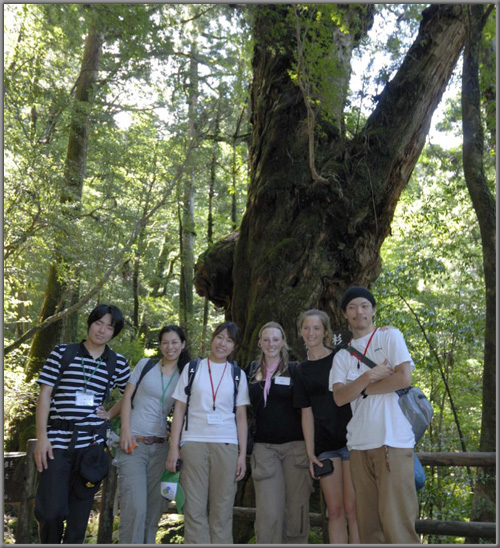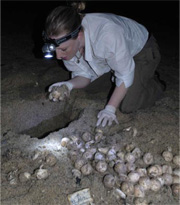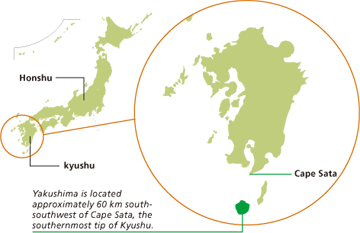Home > Highlighting JAPAN > Highlighting Japan OCTOBER 2011 > A Week on Yakushima
Highlighting JAPAN
INTERNATIONAL YEAR OF FORESTS

Caption: Participants on the Japanese-Australian Environmental Conservation Program stand
before an approximately 1,800-year-old Yakusugi cedar in Yakusugi Land.
Credit: YOSHIFUSA HASHIZUME
A Week on Yakushima

An Australian participant surveys loggerhead sea turtle eggs at a nesting beach on Yakushima, September 4. Eastern Australia and Japan are the two major nesting areas for these turtles.
Credit: YOSHIFUSA HASHIZUME
During the week of September 1 to 7, the Japanese-Australian Environmental Conservation Program was held on the island. This is part of a program started as an assistance project in 2006 by Japan's National Land Afforestation Promotion Organization. Since this year is the International Year of Forests, Yakushima was chosen as the place for the program due to its prominent forest. A total of twenty volunteers participated; six from Australia and fourteen from Japan.

Takaaki Hotta, one of the Japanese participants, said, "It was a valuable experience that was useful to the environment as well as myself. The big thing that I've come away with from this is that by learning about a lot of things with everyone else, I've acquired a perspective on the forest and ocean that I haven't had before." Many people also said, "I'd like to come back in a few years to see what kind of changes have happened to the plants under the nets that protect them from being eaten by deer."
© 2009 Cabinet Office, Government of Japan






